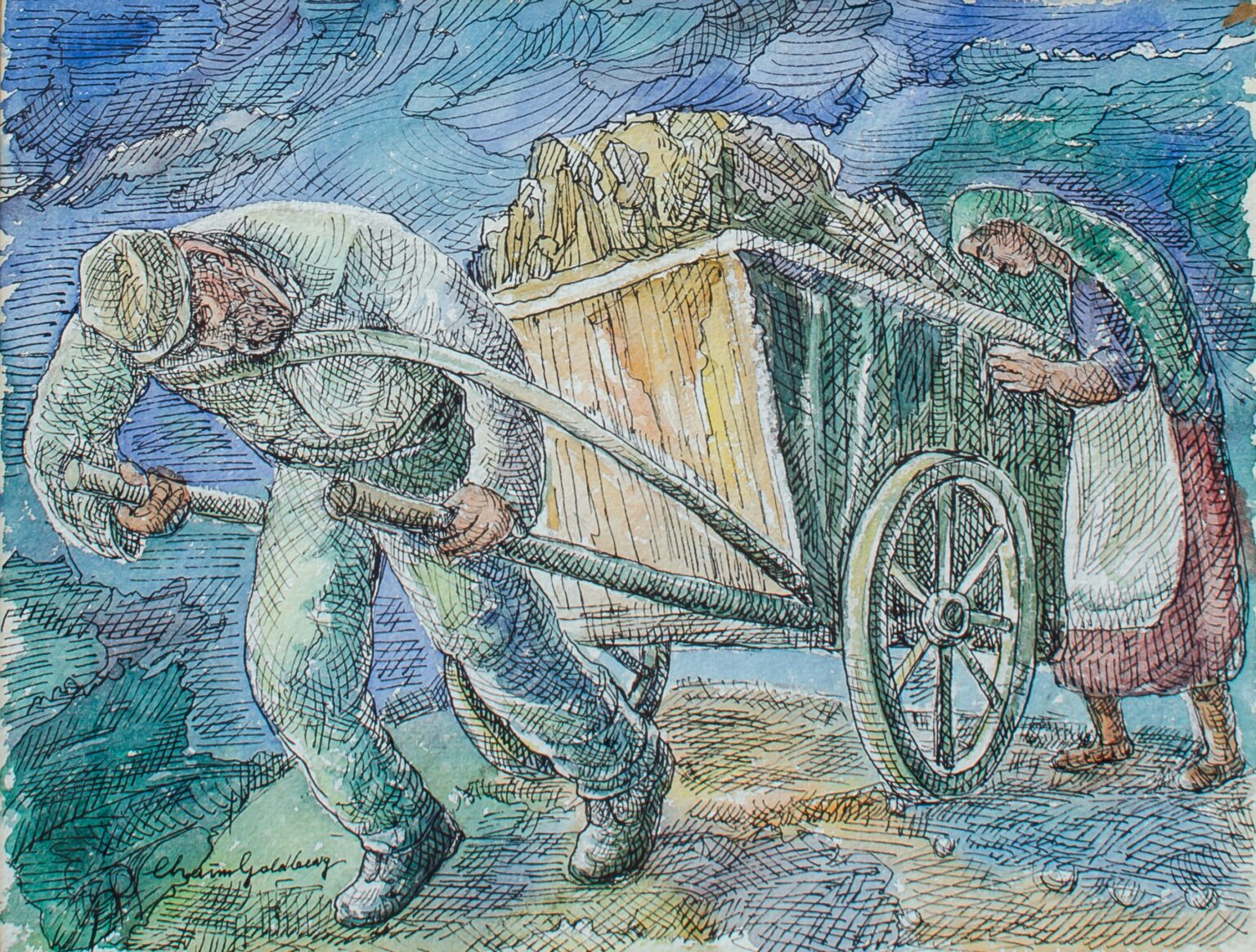
Artist: Chaim Goldberg
Artist Nationality: Polish-American
Artist Dates: 1917-2004
Title: Untitled
Date: 20th century
Condition: Good condition; Not examined outside of the frame
Medium: Ink and gouache on paper
Dimensions: Sight: 11 1/4 x 14 in.; Framed: 19 1/2 x 22 1/4 x 7/8 in.
Estimated Value: $1,500
Signature/Markings: Signed lower left: Chaim Goldberg
A sculptor and painter of works annotating his personal history as a Jewish boy in Kazimierz Dolny, Poland, Chaim Goldberg worked from a studio in Boca Ratan, Florida. His work is perhaps the most extensive record in art form of the Jewish people in Poland.
His father was a cobbler, and young Chaim at age seven began making paintings and drawings of village characters from cobbler's paste. His father showed them to Marc Chagall in Paris, and Chagall bought 52 paintings and invited the young artist to his studio.
Today, the similarities in style between Chagall and Goldberg are obvious. With his artwork, Goldberg with bright, cheerful colors has told the story of Jewish life in a period seldom remembered--the joy of life in the shtetl and the contentment of people living simply. In more somber tones and elongated figures, he recalls the Holocaust and other horrors of World War II.
In 1997, a comprehensive exhibition of his work was held at the University of Austin-Texas: "Remembering the Shtetl: 75 Years of the art of Chaim Goldberg".
In 1939, Goldberg left Poland, fleeing the Nazis. He met his wife, Rachel, when she had vacationed in his hometown. She was an art student in Warsaw, and she and her parents and Goldberg escaped and went to Siberia where Goldberg designed papier mache opera sets. He also began painting his signature paintings.
He and Rachel married after the war, and he studied sculpture with Ossip Zadkine on a fellowship of the Polish Government at the Ecole des Beaux-Arts in Paris. At that time, he created his elongated sculptural forms. The agreement for accepting the fellowship was that Goldberg would return to Poland, where he and his wife and son stayed until 1955. They emigrated to Israel and smuggled a number of his paintings out of the country by carrying them between newspapers into the Israeli embassy in Warsaw. Officials there sent them to Israel in diplomatic pouches.
He worked from a studio in Tel Aviv and also began a series of line engravings. I n the late 1960s, the Goldbergs moved to New York, and from 1967 to 1971, he had 30 shows across the United States. Seeking a warm climate, the family settled in Houston, Texas where Goldberg was quite prolific, creating copper engravings, and abstract oil and watercolor paintings. (Bio sourced from the Archives of AskArt)
Provenance:
Private New York Collection
Exhibition History:
Publication History: